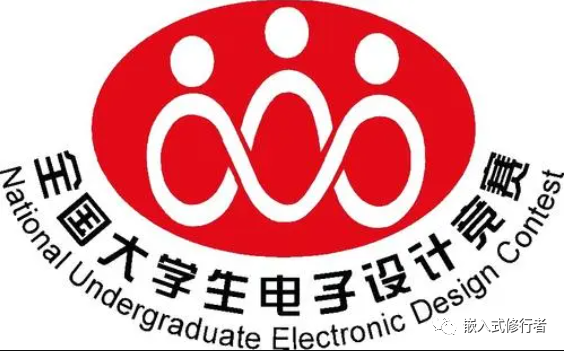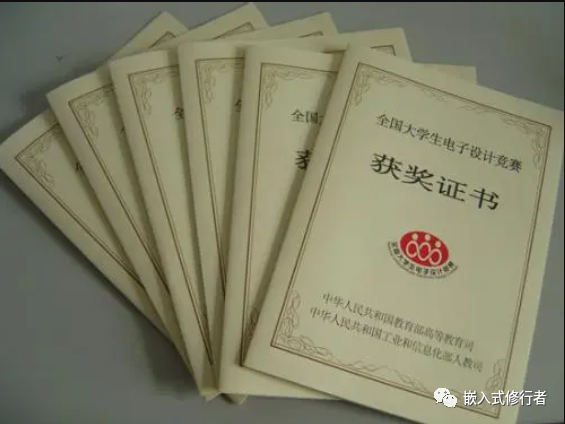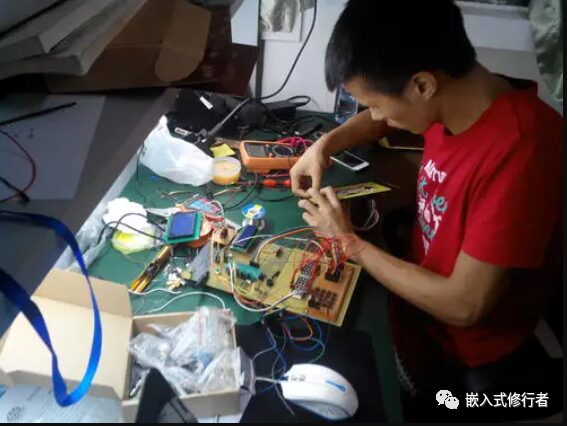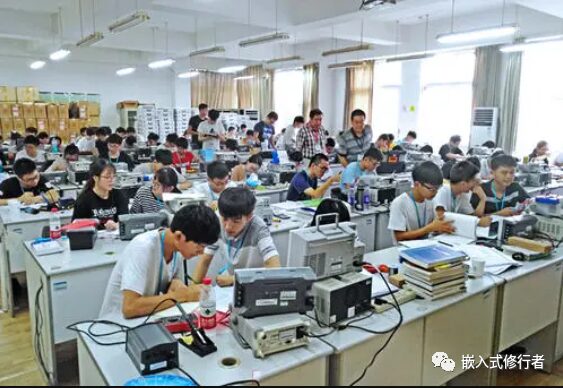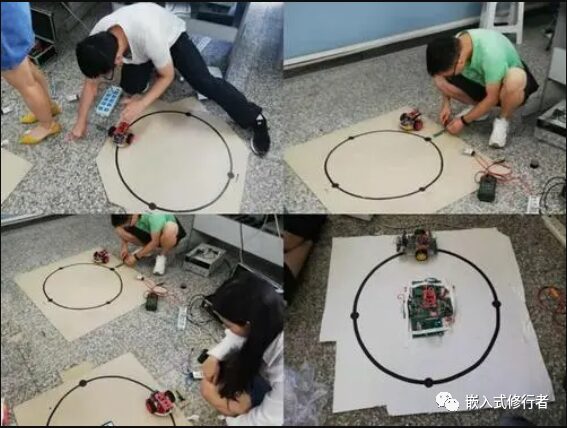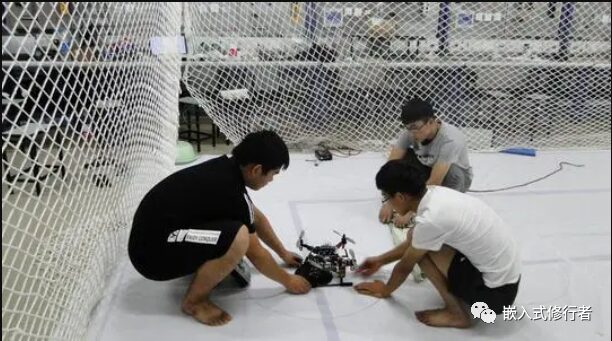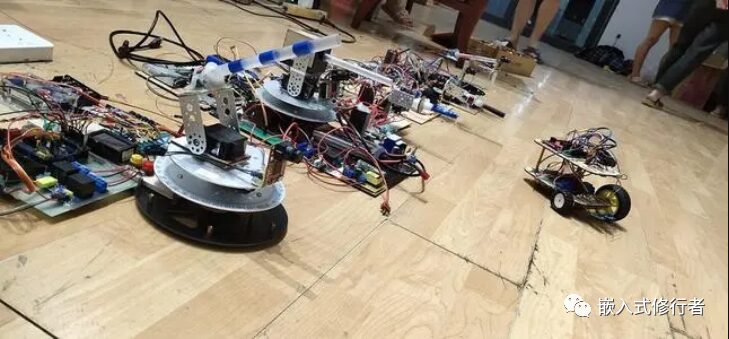Skip to content
Introduction:
The National College Student Electronic Design Competition is one of the discipline competitions initiated by the Ministry of Education and the Ministry of Industry and Information Technology. Every year, many college students participate, but many students are often unclear about the relevant information, processes, and how to prepare for the competition before the competition, leading to insufficient preparation or violations of competition rules, resulting in the loss of eligibility for awards. This article will provide a comprehensive understanding of the National College Student Electronic Design Competition from several aspects.
1.What is the National College Student Electronic Design Competition?
The National College Student Electronic Design Competition is one of the discipline competitions initiated by the Ministry of Education and the Ministry of Industry and Information Technology, aimed at promoting the reform of information and electronics curriculum systems and content in higher education institutions. Since its establishment in 1994, the competition aims to promote the development of industry-academia-research cooperation in China and cultivate outstanding electronic design talents. The number of participating students has grown to around 40,000 each year, making it the largest and most influential electronic design competition for undergraduate students in China.
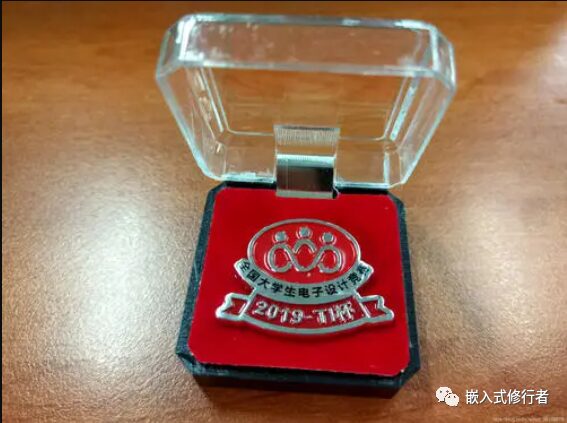 The competition is highly regarded. Winning a national award during the competition greatly increases the chances of being recommended for graduate studies. Even if one cannot be recommended, having a national award during the graduate school interview process will provide a significant advantage. When looking for a job, having experience and awards from the electronic design competition on one’s resume may open doors to excellent companies. Therefore, this competition is highly recommended for students in electronics-related fields. Even if one does not win an award, the process of participating can provide invaluable knowledge and teamwork experiences that cannot be obtained from textbooks.
The competition is highly regarded. Winning a national award during the competition greatly increases the chances of being recommended for graduate studies. Even if one cannot be recommended, having a national award during the graduate school interview process will provide a significant advantage. When looking for a job, having experience and awards from the electronic design competition on one’s resume may open doors to excellent companies. Therefore, this competition is highly recommended for students in electronics-related fields. Even if one does not win an award, the process of participating can provide invaluable knowledge and teamwork experiences that cannot be obtained from textbooks.
2.Competition Rules and Process of the National College Student Electronic Design Competition
Competition Rules:
The electronic design competition is divided into regional and national competitions. Even-numbered years are for regional competitions (e.g., Guangxi region, Hebei region, etc.), while odd-numbered years are for national competitions (for example, 2015 and 2017 were national competitions, while 2016 and 2018 were regional competitions). What is the difference between regional and national competitions? Firstly, in even-numbered years, the competitors in regional competitions are only from local universities, and the topics may vary by region. For instance, if you are in the Guangdong region, your competitors are universities within Guangdong Province, and the judges will also be from within Guangdong Province. The highest award you can achieve is a regional first prize. In the national competition, the topics are unified across the country, and the highest award will be the national special prize.
The competition usually takes place during July-August each year, which is during the summer break, so students participating should be prepared to stay on campus during the competition period. The competition must be in teams of three, and there are two sets of topics: one for undergraduates and another for vocational students. Participating undergraduates can only select topics from the undergraduate set; vocational students are generally expected to choose from the vocational set but may also select from the undergraduate set and will be evaluated according to the undergraduate standards. As long as there is one undergraduate in the team, the team must select from the undergraduate set and will be evaluated according to those standards. Any works that do not comply with these topic selection rules will be deemed invalid and will not be evaluated by the competition committee.
The types of exam questions mainly include power supply, signal source, high frequency, amplification, instruments, and control. The topics will be announced on the day of the competition, and each team can only choose one topic to work on for four days and three nights. The competition takes place in the laboratory of their own school, and during the competition, students can refer to printed or online technical materials. Team members can discuss design ideas collectively, determine design plans, divide responsibilities, and collaborate as a team to complete the competition tasks independently; no teachers or other personnel are allowed to provide guidance or assistance during the competition, and team members are not allowed to discuss with anyone outside the team. Participating schools should concentrate their students in the laboratory for the competition to facilitate organization and supervision. The necessary equipment and components for the competition are provided by the participating schools, and during the four days and three nights, students need to complete their projects and the project documentation.
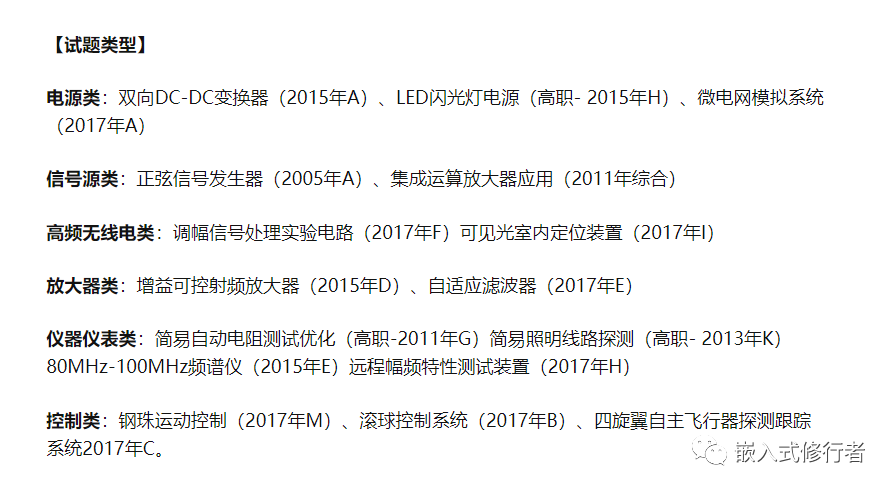 I will share the overall process of the competition based on my own experience:
In March, the school holds an internal selection competition for the electronic design contest, with questions set by the school, and teams of three can sign up. They have one month to complete the topic.
In April, the internal electronic design competition is evaluated. The first day is for evaluating the completion of the topic, and the second day is for testing the software and hardware capabilities of the team members, with questions set by the teachers on-site, divided into software (microcontroller programming) and hardware (basic circuit design and soldering). The team member responsible for software completes the software test, while the member responsible for hardware completes the hardware test. The winners are determined based on the scores from the two days of evaluation, and according to the teachers’ arrangements, the excellent teams may represent the school in the next stage of the regional competition.
In May, registration for the regional competition takes place, and each team must appoint a supervising teacher.
From May to the end of July, this period is for teams to prepare for the competition, during which everyone will look for past topics for practice.
The competition I participated in started on August 7. A week before the competition, on July 31, the official competition committee will announce the components to be used in the competition, allowing us to make guesses about the topics and purchase components in preparation.
On the morning of August 7, the topics are announced, and the four-day, three-night competition begins. The topic I had guessed was completely different from the official one, so on the morning of the 7th, I discussed the topic type with my teacher and determined the topic to work on, after which we began dividing tasks with teammates to complete the topic.
On the evening of August 10, when the competition time is up, committee members will come to the school to supervise the sealing of the projects. The so-called sealing is to use the committee’s seals to seal the projects in boxes for evaluation.
Next is the waiting period for regional evaluation, which needs to be arranged according to the committee’s schedule. Generally, the evaluations are completed within two weeks at the university responsible for the region’s committee. For example, in Guangxi, the evaluations are conducted at Guilin University of Electronic Technology, and all teams from the Guangxi region must go to Guilin University of Electronic Technology for evaluation.
I will share the overall process of the competition based on my own experience:
In March, the school holds an internal selection competition for the electronic design contest, with questions set by the school, and teams of three can sign up. They have one month to complete the topic.
In April, the internal electronic design competition is evaluated. The first day is for evaluating the completion of the topic, and the second day is for testing the software and hardware capabilities of the team members, with questions set by the teachers on-site, divided into software (microcontroller programming) and hardware (basic circuit design and soldering). The team member responsible for software completes the software test, while the member responsible for hardware completes the hardware test. The winners are determined based on the scores from the two days of evaluation, and according to the teachers’ arrangements, the excellent teams may represent the school in the next stage of the regional competition.
In May, registration for the regional competition takes place, and each team must appoint a supervising teacher.
From May to the end of July, this period is for teams to prepare for the competition, during which everyone will look for past topics for practice.
The competition I participated in started on August 7. A week before the competition, on July 31, the official competition committee will announce the components to be used in the competition, allowing us to make guesses about the topics and purchase components in preparation.
On the morning of August 7, the topics are announced, and the four-day, three-night competition begins. The topic I had guessed was completely different from the official one, so on the morning of the 7th, I discussed the topic type with my teacher and determined the topic to work on, after which we began dividing tasks with teammates to complete the topic.
On the evening of August 10, when the competition time is up, committee members will come to the school to supervise the sealing of the projects. The so-called sealing is to use the committee’s seals to seal the projects in boxes for evaluation.
Next is the waiting period for regional evaluation, which needs to be arranged according to the committee’s schedule. Generally, the evaluations are completed within two weeks at the university responsible for the region’s committee. For example, in Guangxi, the evaluations are conducted at Guilin University of Electronic Technology, and all teams from the Guangxi region must go to Guilin University of Electronic Technology for evaluation.
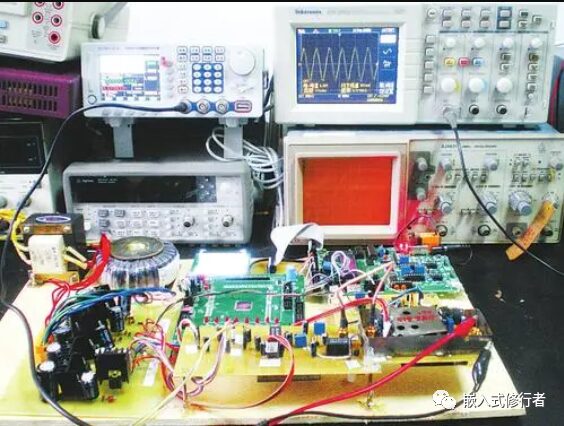 During the waiting period for evaluation and after the evaluation is completed, teams with confidence in winning the regional first prize can start preparing for the comprehensive evaluation. The comprehensive evaluation generally takes place after the evaluation of the works is completed, and only teams that win the regional first prize are qualified to participate in the comprehensive evaluation. The purpose is to select the best teams from the first prize winners of each region for the next stage of the national awards. The regional awards are divided into regional first, second, third prizes, and participation awards, while the national awards are divided into first and second prizes. The number of awarded teams cannot exceed 8% of the total number of actual participating teams nationwide, with the ratio of first to second prizes being 3:7, meaning that the number of national first prizes cannot exceed 2.4% of the total number of actual participating teams, and the number of national second prizes cannot exceed 5.6%. The comprehensive evaluation will be conducted simultaneously at the laboratories of the universities responsible for the region’s committee.
During the waiting period for evaluation and after the evaluation is completed, teams with confidence in winning the regional first prize can start preparing for the comprehensive evaluation. The comprehensive evaluation generally takes place after the evaluation of the works is completed, and only teams that win the regional first prize are qualified to participate in the comprehensive evaluation. The purpose is to select the best teams from the first prize winners of each region for the next stage of the national awards. The regional awards are divided into regional first, second, third prizes, and participation awards, while the national awards are divided into first and second prizes. The number of awarded teams cannot exceed 8% of the total number of actual participating teams nationwide, with the ratio of first to second prizes being 3:7, meaning that the number of national first prizes cannot exceed 2.4% of the total number of actual participating teams, and the number of national second prizes cannot exceed 5.6%. The comprehensive evaluation will be conducted simultaneously at the laboratories of the universities responsible for the region’s committee.
 Combining the scores from the work evaluation and the comprehensive evaluation, teams that perform poorly will stop at the regional first prize, while excellent teams will participate in the next stage of the national awards. If you participate in the regional competition in an even-numbered year, the competition will end after the comprehensive evaluation is completed. The total evaluation for the 2019 National College Student Electronic Design Competition was held at Tongji University in Shanghai, where outstanding teams from each region went for the final evaluation to award the national special prize, first prize, and second prize.
Combining the scores from the work evaluation and the comprehensive evaluation, teams that perform poorly will stop at the regional first prize, while excellent teams will participate in the next stage of the national awards. If you participate in the regional competition in an even-numbered year, the competition will end after the comprehensive evaluation is completed. The total evaluation for the 2019 National College Student Electronic Design Competition was held at Tongji University in Shanghai, where outstanding teams from each region went for the final evaluation to award the national special prize, first prize, and second prize.
3.How to Prepare for the National College Student Electronic Design Competition
After discussing the competition details, let’s talk about how to prepare for the electronic design competition:
1.Have a solid foundation
A solid foundation is essential. Before participating in the internal electronic design competition, you should have a basic understanding of circuits, C language, and the use of microcontrollers like 51, STM32, and Arduino. Ideally, you should have independently completed some small designs using a microcontroller, such as a line-following car, electronic lock, timer, etc. Some may say, “What if the teacher hasn’t taught it yet?” To this, I can only say that waiting for the teacher to teach is completely useless. The professional courses in college are scheduled relatively late, and what the teacher teaches is mostly theoretical, often only scratching the surface. The content taught by the teacher is not sufficient for the competition, so you must take the initiative to learn. Joining the school’s laboratory or an electronics enthusiasts club will provide a good learning environment and resources. You can buy a development board online and start self-learning by watching videos.
2.Choose the right teammates
The electronic design competition must be in teams of three, and having good teammates is essential. Finding teammates with complementary skills and good cooperation directly affects the team’s direction, progress, and results during the competition.
3.Make adequate preparations before the competition
There is a relatively long preparation period before the competition. During this time, it’s best to discuss the direction of your team’s work with your teammates and supervising teacher, and then look for past topics for practice. When the list of components is announced a week before the competition, you should be ready to purchase the components. Otherwise, during the four days and three nights of the competition, you won’t have enough time to buy new components, and the special chips for the competition may increase in price or go out of stock during that time.
In my year, I worked on a control topic, and before the competition, I practiced with a balancing car, an inverted pendulum, a wind-powered swing, and a cricket control system, which were past control-related competition topics. During that time, I became quite familiar with microcontroller programming, mechanical structure construction, and PID algorithms. To reduce the pitfalls encountered during development, our team used Arduino microcontrollers in the competition. Arduino has strong performance and a wealth of libraries, making it more user-friendly than C51, STM32, etc. It completely abstracts away the register configuration, as almost all functions are already available through higher-level library calls, which simplifies most hardware-related operations. For those not familiar with low-level programming, Arduino is a powerful tool for the competition. Additionally, currently, the competition is sponsored by Texas Instruments (TI), so one of the topics must involve a TI processor, which is likely to be among the control topics. Therefore, students with extra capacity can also learn about TI boards, such as MSP430. Moreover, using a TI processor during the competition may provide an advantage in scoring under the same conditions. Currently, it is prohibited to use high-end processors like Raspberry Pi for the topics; otherwise, it will be treated as a violation. Regarding control topics, there is also a blog post that is well-written, which students in this direction can refer to:
How to Prepare for the National College Student Electronic Design Competition Control Topics Link:
https://blog.csdn.net/u013963960/article/details/92802544?ops_request_misc=%7B%22request_id%22%3A%22162372469716780269870855%22%2C%22scm%22%3A%2220140713.130102334..%22%7D%E2%80%8B
This is my sharing based on my experience participating in the National College Student Electronic Design Competition. I hope it can help everyone. During the time spent participating in the electronic design competition at school, learning with teammates, solving problems together, and spending sleepless nights in the laboratory, sharing joy and hardship, gaining knowledge and honor, is an unforgettable time in college.
Welcome everyone to join the microcontroller/embedded learning exchange QQ group: 867069452
